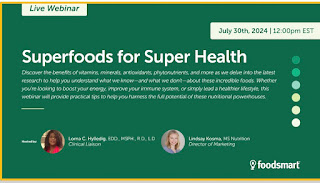The Scoop on Trans Fats
Understanding Trans Fats:

Some animal food sources, for example, dairy products and meat contain small quantities of trans fats naturally. Generally, these small quantities of trans fats that are in their natural state do not present a major issue.
The major issue arises when trans fatty acids are manufactured via the process of partial hydrogenation. During this process, hydrogen is added to vegetable oils turning them into solid fats such as margarine and shortenings used for baking. The new products are also referred to as partially hydrogenated oils or (PHOs).
Usually, in natural polyunsaturated fatty acids, the hydrogen atoms are configured on the same side of the double bonds along the carbon chain. In the process of partial hydrogenation, reconfiguration occurs so that hydrogen atoms at the double bonds are arranged across from each other on opposite sides of the carbon chain. This new configuration is referred to as the trans configuration and results in trans fatty acids. The reconfiguration also introduces a further degree of instability within the chain.
Where are the trans fats???
Although the Food and Drug Administration (FDA) has now banned the addition of partially hydrogenated oils to foods, trans fatty acids may still be present in some foods such as:
- Refrigerated doughs including biscuits and cinnamon rolls
- Microwaveable popcorn
- Nondairy Coffee creamers
- Frozen pizzas, frozen dinners, frozen yogurt, milkshakes, puddings and frozen pies
- Breads, crackers, cookies, cakes, donuts and other commercially baked products
- Vegetable Shortenings and some stick margarines
- Ready-to-use frostings
- Fried and battered packaged foods
- Breaded or fried chicken or seafood
- Fast foods
Adverse Health Effects associated with Trans Fats:
Trans fats have the rap as being the worst type of fat for our health. In fact, information derived from the FDA, the Institute of Medicine and the American Heart Association suggests that trans fats may increase the risks of developing heart disease more than saturated fat.
Health Risks include but are not limited to the following:
- Weight gain - Many baked products, fried foods and other foods listed above contain trans fats. However, in addition to the type of fat contained, these foods contribute 9 calories per gram and contribute significantly to weight gain.
- Increased Risks for Diabetes & Other Chronic Diseases- Weight gain and excess weight are at the center of the development of several chronic conditions and contribute to the development of insulin resistance, and diabetes.
- Cardiovascular Disease Risks- Trans fats are known to raise LDL (bad) cholesterol levels, lower HDL (good) cholesterol levels. The combination of High LDL and Low HDL levels contribute to the accumulation of cholesterol in the arteries thereby increasing the risks for heart disease and stroke.
How much is too much???
Public health authorities as well as groups of international experts have suggested limiting consumption of both manufactured and ruminant trans fats to less than 1 % of the total daily caloric intake.
Recommendations for reducing trans-fat intake:
- It is imperative that you read nutrition labels on food packages and pay keen attention to both the fat content and trans-fat content
- Pay attention to the quantity of trans fat per serving and the number of servings that you plan to consume
- Check the ingredients list of food labels to determine if partially hydrogenated oils (PHOs) are contained
- Check fast food websites and menus for the nutrition information provided for their products.
References
Hensrud et al (2020). Nutrition's Interface with Health and Disease. In: Goldman & Schafer AI, Goldman-Cecil Medicine, 26th Ed. Elsevier, Philadelphia, PA.
Mozaffarian, D (2022). Nutrition and Cardiovascular and Metabolic Diseases. In: Libby et al. Braunwald's Heart Disease: A Textbook of Cardiovascular Medicine. 12th Ed. Elsevier, Philadelphia, PA.
US Department of Health and Human Services; Food and Drug Administration (2022). Trans Fat. www.fda.gov/food/food-additives-petitions/trans-fat:[https://www.fda.gov/food/food-additives-petitions/trans-fat].












Thank you for this wonderful, educational post! You did an excellent job breaking down the differences between cis and trans fats in layman’s terms!
ReplyDeleteThank you, Ashley! My goal is to take the science and convey it in a simplified way that lay persons can follow and understand. Isn't this one of our main objectives in serving our clients in the health and medical industries?
ReplyDeleteGreat article. Thank you for dedication to inform us of the things we need to pay attention to when we purchase our food. Thanks for sharing.
ReplyDeleteYvonne.
ReplyDeleteYvonne, thank you for your comment! In this season, I feel compelled to share knowledge and insights with the community at large.
It's amazing how many of the foods I would eat on a regular basis contain trans fats. I actually don't think it would be too difficult to limit some of these foods, just takes a bit of effort.
ReplyDeleteYes, I agree. Awareness is the first step. Now you can work on making needed changes.
DeleteI thought trans. Fats were totally banned. It’s good to know that it is still in some products especially cookies and yogurt. I will pay closer attention to what I eat now.
ReplyDeleteYes, they are still found in some products. Food labels can be very helpful in determining the ingredients contained as well as as trans fats.
ReplyDelete